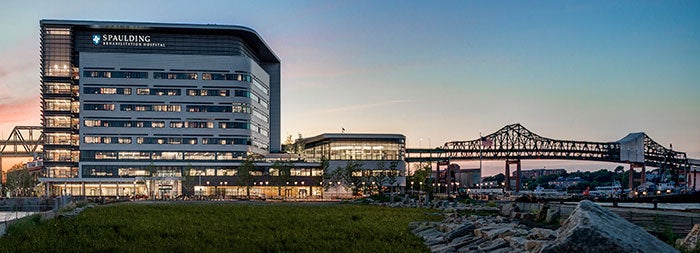Spaulding Rehabilitation earns ASHE award by cutting energy use

ASHE named Spaulding Rehabilitation Hospital 2016 Energy Champion.
Spaulding Rehabilitation Hospital is proof that saving energy can become a never-ending quest even at new hospitals.
Opened three years ago on Boston Harbor in the city’s historic Charlestown Navy Yard, Spaulding was designed as a sustainable and accessible facility that offered excellent patient care and also served as a community gathering place.
The hospital also was designed to use about one-third less energy than other hospitals the same size, which helped the facility earn a Leadership in Energy and Environmental Design Gold rating from the U.S. Green Building Council.
Even with that ambitious beginning, Spaulding still reduced its energy use by 15 percent in 2015 compared with the prior year by undertaking a variety of energy-saving actions.
The reduction earned Spaulding the first-ever Energy Champion Award from the American Society for Healthcare Engineering at its 2016 Annual Conference and Technical Exhibition recently held in Denver. The award recognizes a single facility that demonstrates outstanding leadership in energy efficiency.
Spaulding is part of Partners HealthCare, Boston, whose systemwide mission to reduce energy use by 25 percent at each of its hospitals and health care facilities, says Teerachai Srisirikul, director of engineering, Partners HealthCare.
As with the other facilities in the health care system, the energy savings at Spaulding are largely a result of applying the latest technology as well as taking fundamental, time-proven steps, Srisirikul says.
- Key actions taken by Spaulding to cut energy use include:
- Utilizing occupancy sensors to cut cooling or heating in unoccupied rooms and spaces.
- Replacing all lighting with LED lights with built-in occupancy sensors.
- Optimizing chiller plant performance.
- Retrocommissioning mechanical systems to ensure efficient operation.
Utilizing building automation software to send alarms when systems operate outside settings.
“This year’s Energy Champion exemplifies the amazing efficiencies that can occur when hospital leaders, facility professionals and everyone involved in the health care environment work together,” says Dale Woodin, CHFM, FASHE, American Hospital Association vice president, personal membership groups.
Srisirikul says the fact that Spaulding was named Energy Champion after being open only three years shows that ways exist to reduce energy use in new hospitals, too.
“That just proves that new constriction doesn’t mean it’s the most efficient,” he says. “Absolutely there are opportunities to save energy in new buildings.”
Opportunities exist especially as technology advances so quickly now. In the time Spaulding was designed, built and then opened, LED lighting was not the best option available at the time.
“Even [with[ a building that opened two years [ago], a lot of things may not be up to date already from a technology standpoint,” he notes. “It’s obsolete already.”




